‘Dreadlock Kitty’ and Other Grooming-Neglect Horror Stories (Photos)
When Chicago’s Anti-Cruelty Society got a call about a Persian cat named Sinbad, he was described as looking like he was “dragging a carpet.” That “carpet” turned out to be his own fur—which had been neglected for so long by his elderly guardian that it had formed into an enormous, filthy mat that nearly engulfed him.
It took hours for shelter workers to shave off the 5 pounds of fur that had accumulated over several years. Sinbad had been trapped in his fur prison for so long that his hind legs had atrophied. He’s now being nursed back to health by the organization.
We wish we could say that Sinbad was an anomaly, but he’s not. Recently, a cat whose body was covered with mats was taken to Pittsburgh’s Animal Rescue League Shelter & Wildlife Center clinic after her elderly guardian was moved into a nursing home. Her tangled mass of fur resembled dreadlocks.
PETA fieldworkers routinely encounter similar cases of severe grooming neglect. The following are just a few examples.
This elderly, blind cocker spaniel was brought to PETA’s shelter for euthanasia by his ailing guardian’s son when the dog became so ill that he could no longer walk. In addition to being covered with enormous mats, he was suffering from severe dental disease that probably made it difficult for him to eat.
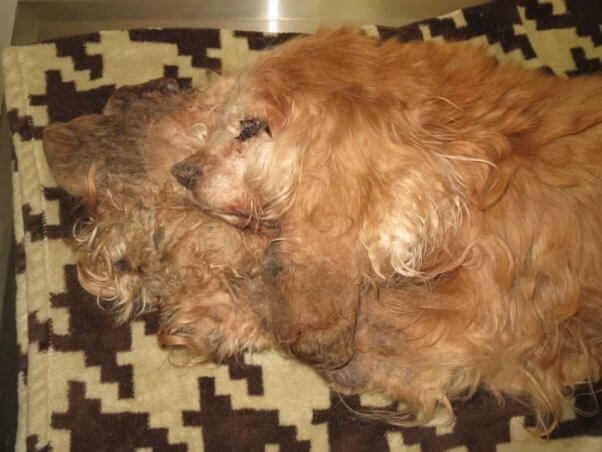
This dog’s elderly guardian called PETA because the animal’s rear legs were extremely swollen and he was crying out in pain. The cause of the swelling? He had such severe mats on his legs that they’d cut off the circulation.
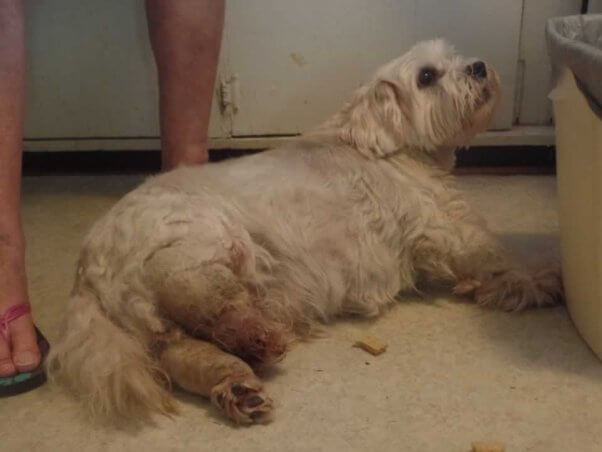
One rear paw had swollen to twice its normal size, and his toes were cold and purple. When the veterinarian cut through the mats, the flesh underneath was dead and fell off, exposing bone. Because he would’ve needed to have both hind legs amputated, his guardian elected to have him euthanized to end his suffering.
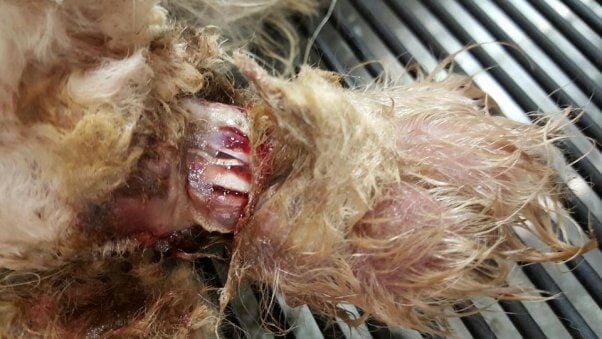
PETA fieldworkers found Larry in a backyard, confined to a filthy rabbit hutch hidden behind piles of junk. Forced to live in his own waste, he was encrusted with filthy mats, and his toenails were overgrown. One nail became embedded in his paw, causing a painful infection.
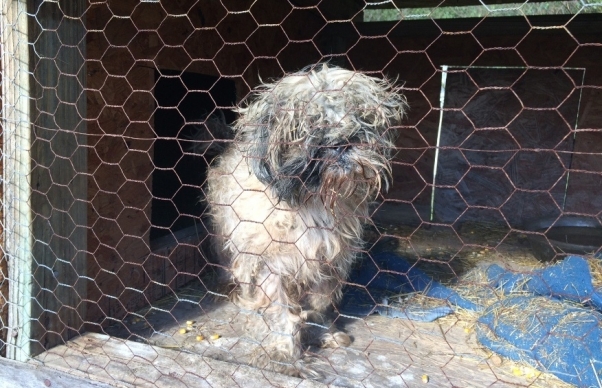
He was also suffering from eye and ear infections, and he was so anemic from parasite infestations that the vet was shocked that he was still alive. But after a haircut, a bath, a toenail trim, and emergency medical treatment, Larry made a full recovery and was adopted by a PETA staffer.

When Soupster was dropped off at PETA’s headquarters one Christmas Eve, she was filthy, matted, and suffering from numerous infections. Once her fur had been shaved off, we could see that the skin underneath was raw and covered with oozing sores.
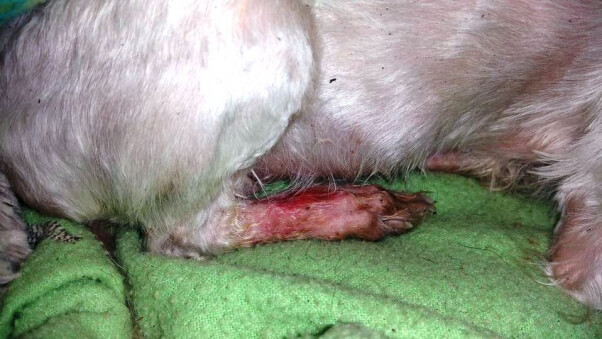
All but three of her teeth had to be pulled because of advanced dental disease. The infection in her mouth had gone untreated for so long that it had spread to her sinuses—and the roof of her mouth actually had to be stitched back together.
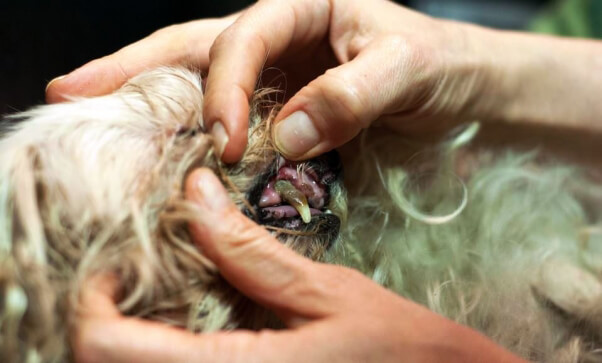
With round-the-clock care, Soupster recovered and was adopted by a PETA staffer.

In one of the worst cases of dental neglect that we’ve ever seen, this elderly Chihuahua’s jaw had literally rotted away. Her lower jaw was broken into two pieces that were just being held together by skin, and she was yelping in agony. She was euthanized at her guardian’s request.
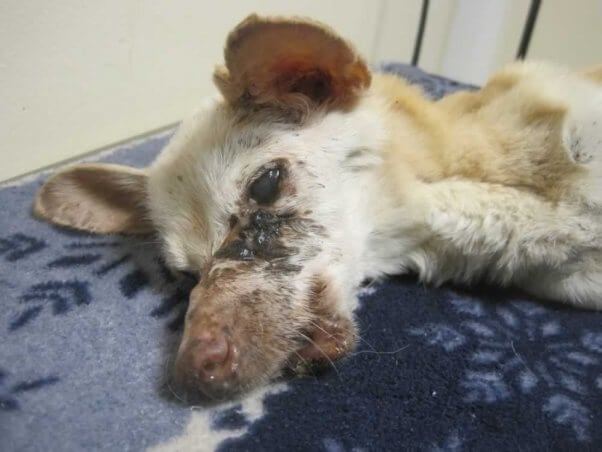
After this geriatric dachshund became incontinent and stopped eating, her guardian called PETA to request that she be euthanized. An examination revealed that her dental disease was so advanced that she had a gaping hole in her upper jaw.
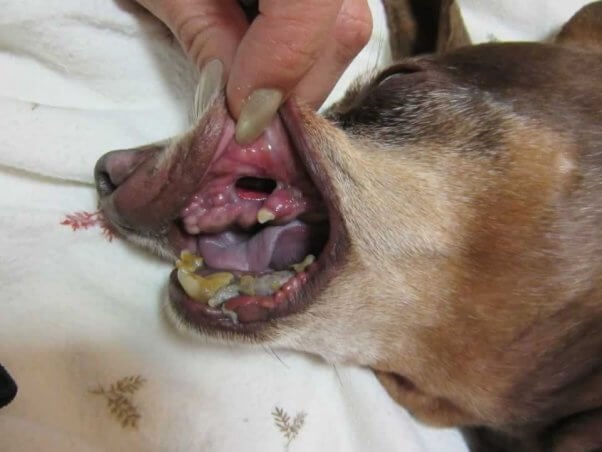
This Chihuahua’s severe, untreated dental disease caused her to develop a cyst in her upper jaw that became infected and interfered with her breathing and vision. She was so ill when her guardian called PETA’s emergency pager that she could no longer eat or walk.
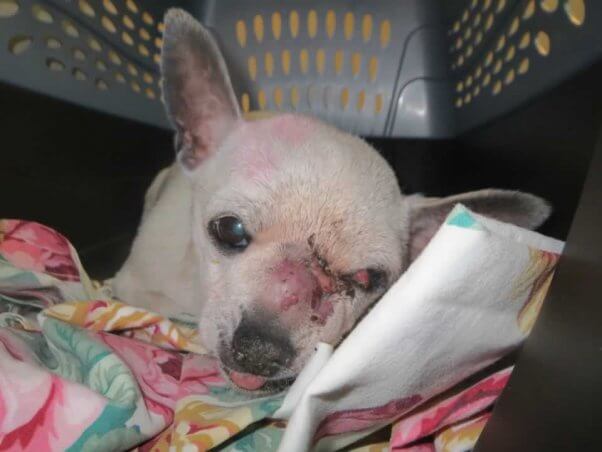
These are just a few examples of what are, unfortunately, common forms of neglect—and they illustrate how vital proper hygiene is to dogs’ and cats’ health. Be sure to comb and brush your animals’ fur and examine their teeth regularly. Cut out any mats that form right away (being careful not to trim too close to their skin). If they allow it, brush their teeth several times a week. If they’re resistant to this, provide them with teeth-cleaning chews and treats in addition to adding dental rinse to their drinking water or spraying it in their mouths. Make sure that the vet examines their teeth during their annual check-up.
If you know of any animals who are suffering from grooming neglect, impress upon their guardians the urgency of getting them treated right away. Offer to take the animal to a vet yourself if you’re able to—otherwise, if the guardian refuses to act, notify authorities. If they aren’t responsive, contact PETA.

